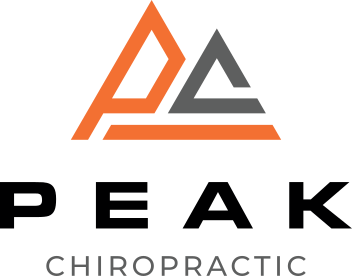When you face a sports injury, understanding effective rehabilitation strategies can make all the difference in your recovery journey. You might think rest is enough, but incorporating techniques like physical therapy and targeted exercises is essential for ideal healing. Plus, innovative recovery tools could enhance your progress in ways you haven't considered. Each strategy plays a unique role in your rehabilitation, but knowing which ones to prioritize can be challenging. So, what are the top five strategies that could help you recover faster and return to your game?
Rest and Recovery
When it comes to recovering from sports injuries, you can't underestimate the importance of rest. It's during this downtime that your body begins to heal itself, repairing damaged tissues and reducing inflammation. Ignoring the need for rest can prolong your recovery and even lead to more serious injuries down the line.
You need to listen to your body. If you're feeling pain or discomfort, it's a clear sign that you should take a break. Pushing through the pain might seem heroic, but it often leads to setbacks. Instead, allow yourself the time to recuperate. This doesn't mean you have to become completely inactive; gentle movements or activities that don't strain your injury can promote blood flow and support healing.
Establishing a recovery plan is essential. Set aside specific periods for complete rest and alternate those with light activity that won't exacerbate your injury. Staying hydrated and getting adequate sleep are equally important as they both play significant roles in recovery.
You might also consider incorporating nutrition into your recovery strategy. Foods rich in protein, vitamins, and minerals will provide your body with the necessary tools to heal.
Ultimately, recognizing the value of rest in your rehabilitation process can make all the difference. Embrace this time for recovery, and you'll return to your sport stronger and more resilient than before.
Physical Therapy Techniques
While rest is essential for recovery, physical therapy techniques can greatly enhance your rehabilitation process. These techniques aim to restore movement, reduce pain, and promote healing, allowing you to get back in the game faster.
One effective technique is manual therapy, which involves hands-on manipulation of your muscles and joints. This can help alleviate pain, improve circulation, and increase your range of motion. A skilled physical therapist can target specific areas, releasing tension and promoting better function.
Another valuable approach is modalities like heat and ice therapy. Applying heat can relax tight muscles, while ice reduces inflammation and numbs pain. Your therapist will guide you on when and how to use these modalities for maximum benefit.
You might also benefit from ultrasound therapy, which uses sound waves to promote tissue healing and reduce swelling. This non-invasive technique can penetrate deep into the tissues, encouraging faster recovery.
Additionally, neuromuscular re-education is essential for restoring proper movement patterns. This technique helps your body relearn how to move correctly, preventing compensation that could lead to further injury.
Lastly, stretching and flexibility exercises are significant. They keep your muscles supple and prevent stiffness, which is essential as you progress in your rehabilitation.
Strengthening Exercises
Strengthening exercises play an essential role in your rehabilitation journey, helping to rebuild muscle strength and stability around the injured area. After an injury, it's vital to regain your strength to not only support the healing process but also prevent future injuries. These exercises focus on gradually increasing resistance and load, allowing your body to adapt safely.
Start with low-impact movements that target the specific muscle groups affected by your injury. For instance, if you've injured your knee, exercises like leg raises or squats can be beneficial. As you progress, incorporate resistance bands or light weights to challenge your muscles further. Remember, it's important to listen to your body; push yourself, but don't overdo it.
Consistency is key. Aim to perform your strengthening exercises at least three times a week, allowing for rest days in between to let your muscles recover. You should also focus on proper form to guarantee you're working the right muscles and minimizing the risk of re-injury.
Consider working with a physical therapist who can tailor a program specifically for you, making sure you're on the right path.
Don't forget to include a mix of exercises that target not just the injured area but also surrounding muscles. A well-rounded approach will enhance overall stability and functionality.
As you regain strength, you'll feel more confident in your movements, setting you up for a successful return to your favorite sports and activities.
Ice and Compression
Ice and compression are foundational elements in managing sports injuries effectively. When you experience an injury, applying ice helps reduce swelling and numbs the pain. You should start icing the affected area as soon as possible, ideally within the first 48 hours post-injury.
Use an ice pack or a bag of frozen peas wrapped in a towel to prevent frostbite. Apply the ice for about 15 to 20 minutes every hour as needed, making sure to give your skin a break between sessions.
Compression works hand-in-hand with ice. By wrapping the injured area with an elastic bandage or compression sleeve, you can further minimize swelling. Just remember not to wrap it too tightly, as that can restrict blood flow and cause more harm than good.
Look for signs of excessive tightness, like increased pain, numbness, or a change in color.
Combining ice and compression can greatly speed up your recovery process. This duo not only alleviates pain but also helps you maintain mobility in the injured area.
If you find that the pain persists or worsens despite using ice and compression, consult a healthcare professional for further evaluation.
Innovative Recovery Tools
Many athletes are turning to innovative recovery tools that enhance the healing process and boost performance. These tools range from advanced technologies to simple gadgets that can make a notable difference in your recovery journey.
One of the most popular tools is the use of pneumatic compression devices. These machines apply controlled pressure to your limbs, improving blood circulation and reducing swelling. Using one post-training can speed up your recovery, allowing you to get back to your routine faster.
Another game-changer is the infrared therapy device. By using infrared light, these devices penetrate deep into your tissues, promoting healing at the cellular level. Many athletes report reduced pain and inflammation after regular sessions, making it an effective addition to your recovery toolkit.
You might also consider using vibration therapy tools. These handheld devices deliver targeted vibrations to sore muscles, helping to release tension and improve flexibility. Incorporating vibration therapy can notably enhance your mobility, which is essential for injury prevention.
Lastly, don't overlook the benefits of foam rollers equipped with heat technology. These allow you to combine the effects of self-myofascial release with heat, providing relief while improving your muscle recovery.
Conclusion
Incorporating these top rehabilitation strategies can make a significant difference in your recovery from sports injuries. Prioritizing rest and recovery, utilizing physical therapy techniques, and engaging in strengthening exercises are essential steps. Don't forget the benefits of ice and compression for managing pain and swelling, along with innovative recovery tools to enhance your flexibility and circulation. By following these strategies, you'll be well on your way to getting back to your favorite activities stronger and more resilient.



